A Female Belted Kingfisher
With the water receding, there were fewer “good” perch spots from which to fish
Belted Kingfishers are active hunters. They may make a hunting flight from one perch and return to the same perch, but often they will fly to very distant hunting spots after each hunting foray. With the water receding at El Rio, the fish were not spread out far making one particular tree with multiple perch spots a bit more useful for this Kingfisher.
This is a female Belted Kingfisher. Unlike many other bird species, it is the female Belted Kingfisher that is more colorful than the males of the species are. Both the male and female Belted Kingfishers have a blue/gray band across their chest. The females have an additional rust colored band across their bellies. Scientists are not sure why this is the case but that doesn’t stop anyone from speculating.
Now you know how the word “belted” became part of this bird’s name. To learn about the origins of “Kingfisher”, (besides knowing the fishing prowess of this bird), you may want to delve into the origins of the Greek myth behind this species’ Latin name. The story is told by another Dan here.
Sometimes the Kingfisher will eat its prey in flight but usually it will land on a perch before flipping the fish into position to swallow it. At some point the Belted Kingfisher will also quickly shake out the water from its feathers to dry off. Then, it will turn and resume looking for the next fish to eat. In the photo below, you may notice that as the Kingfisher is shaking its feathers, it also has the nictitating membrane engaged over its eye. No sense in taking a chance of some random flying debris hitting its eye.
It is said that you can hear a Belted Kingfisher long before you might see it. They will make their rattling call in flight and while perched. It is a unique sound and can be made for any number of reasons including as a territorial warning, an alarm call, contact between mates, or even just an excited call indicating they see a fish and are heading after it. You can hear a soft call at this link but louder calls may be heard across a body of water from a distance of hundreds of feet.
Belted Kingfishers are found across North America. In Tucson and southern Arizona, we see them most often during the winter as this range map from AllAboutBirds shows. You can learn more about these birds by exploring the site that the map link takes you to.
Tucson Bird Alliance tells us more about this species.


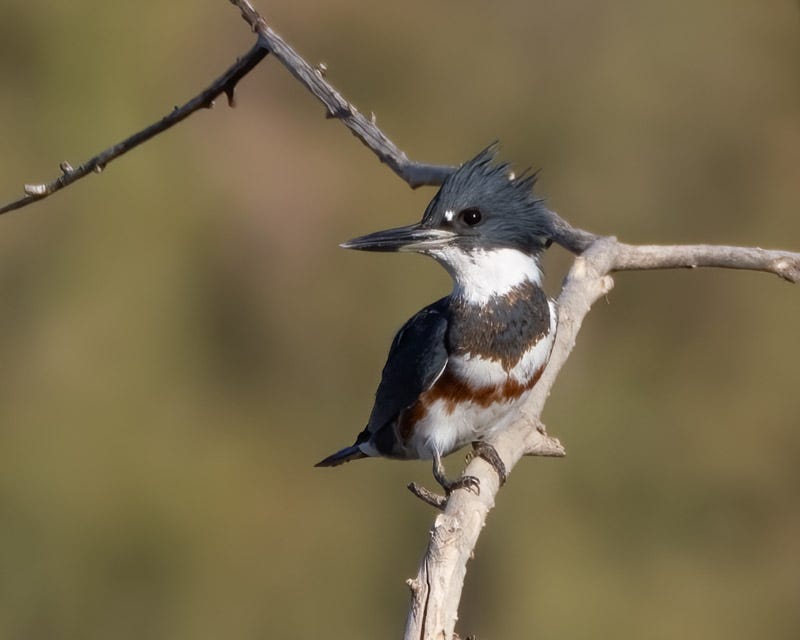
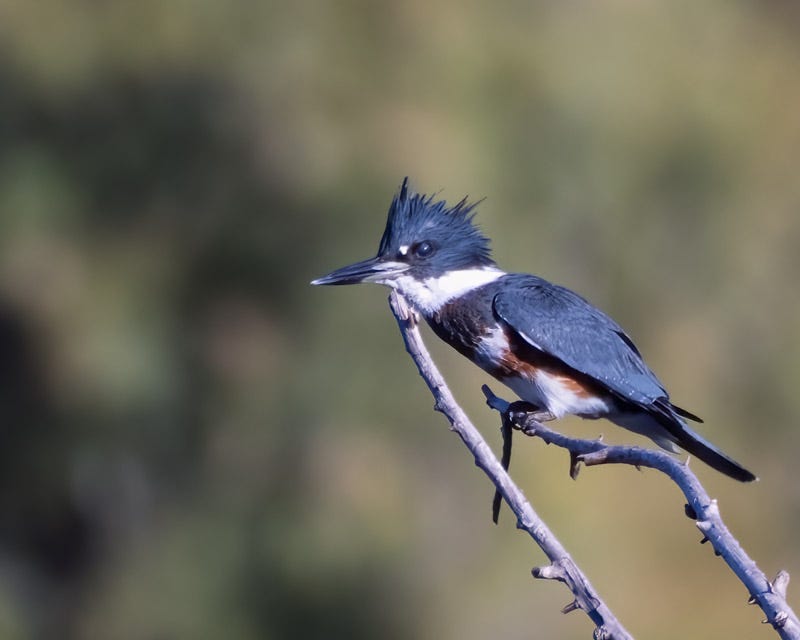
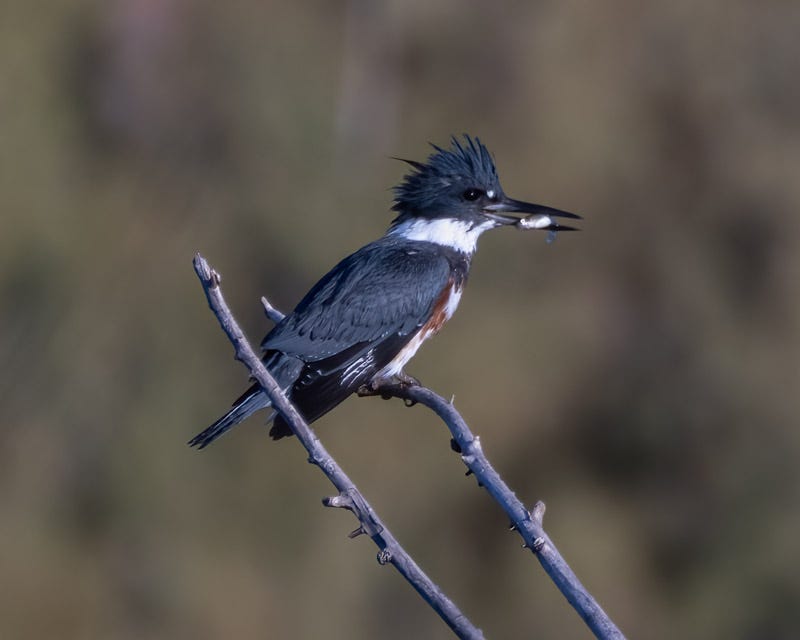
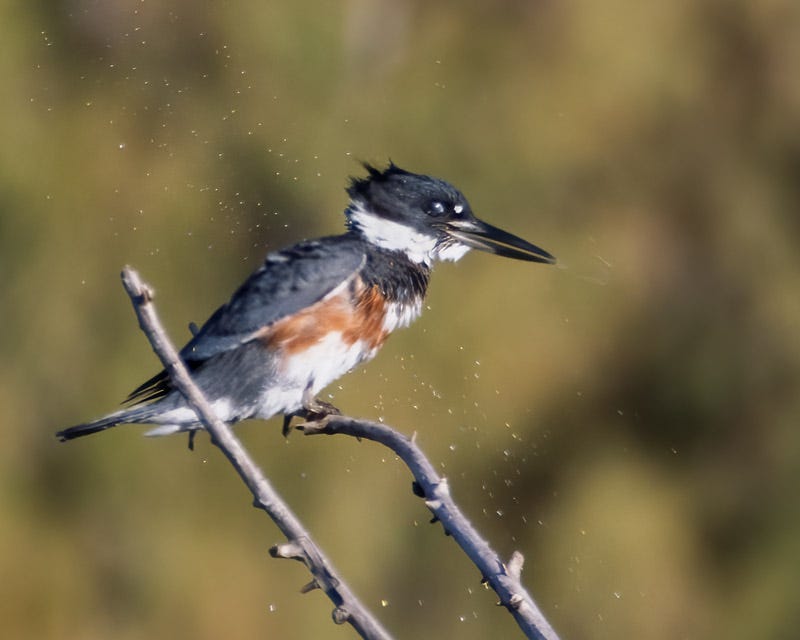
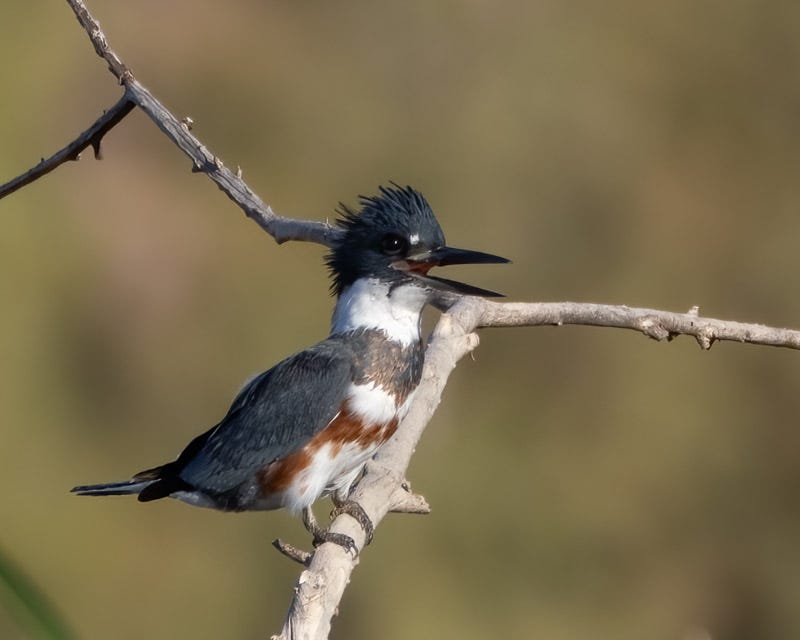
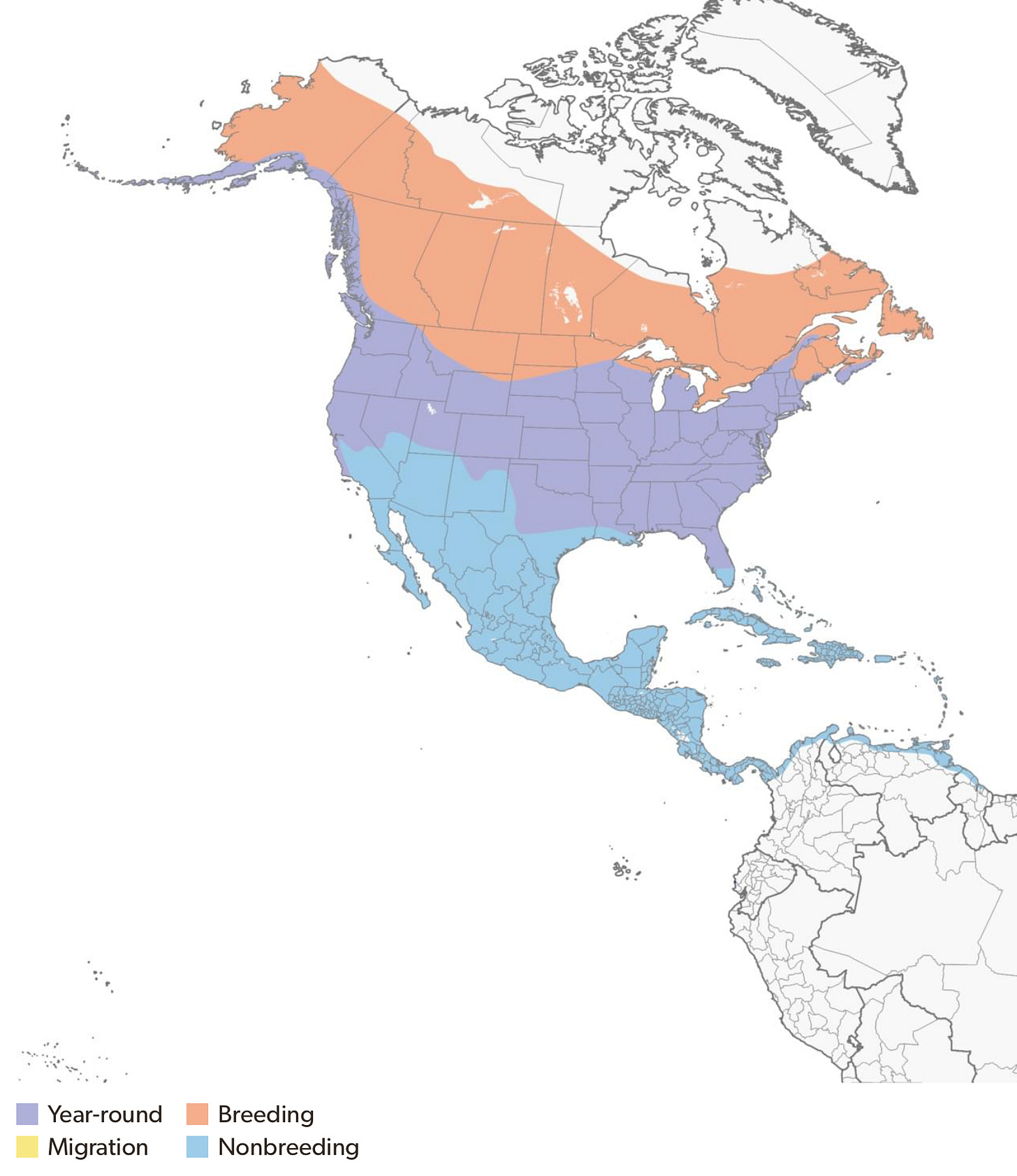
I loved this mythological storey of the Kingfishers! They are a favorite bird of mine that I often see while kayaking in Wisconsin.
So interesting to learn about the female and her colouring. Beautiful pictures. I heard a Kingfisher chatting away today on my walk. Always enjoy hearing their call